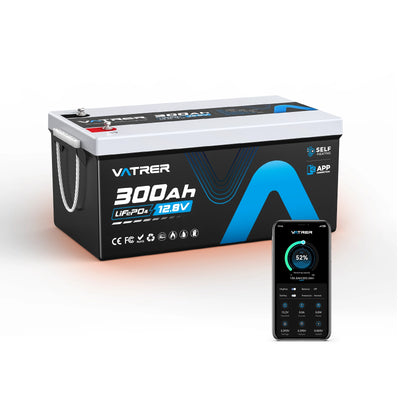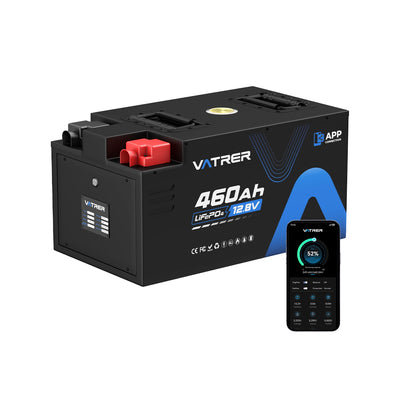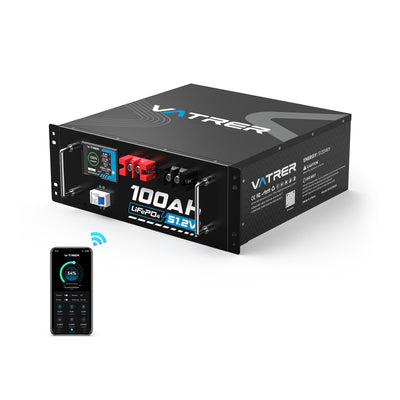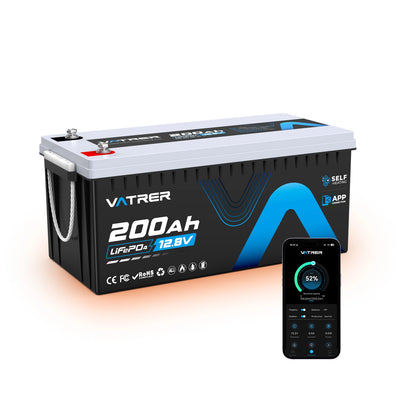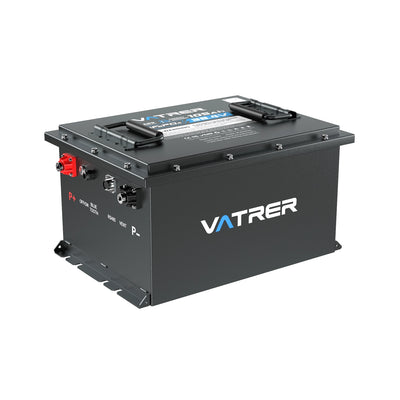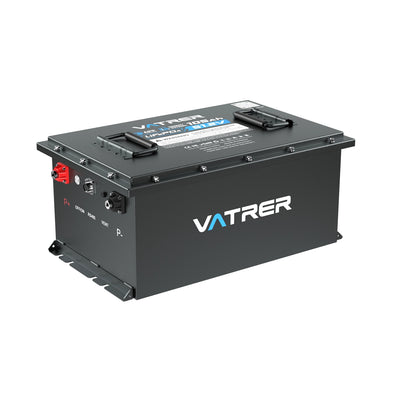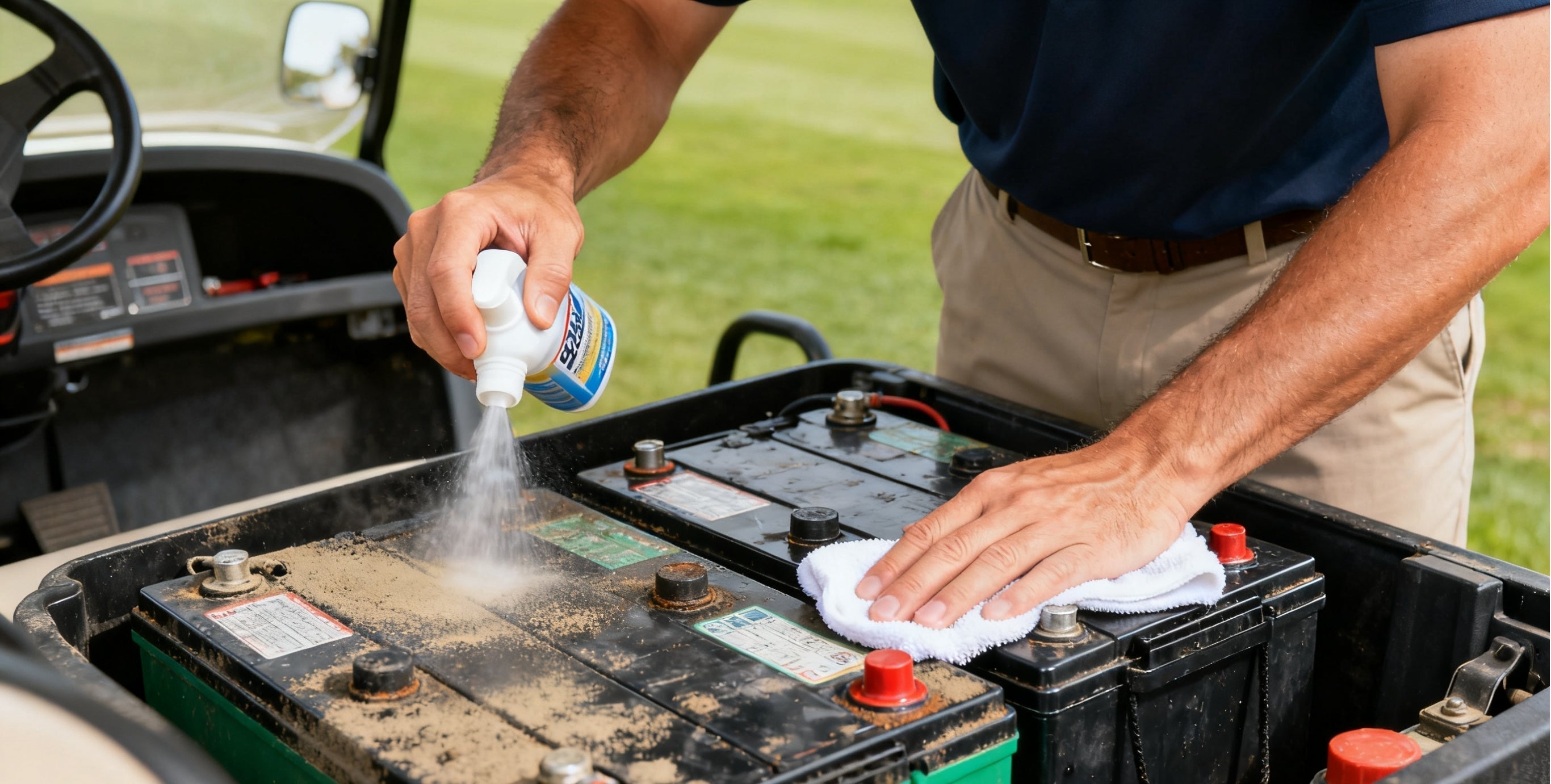Startseite
>
Erhalten Sie die neuesten Nachrichten aus der LiFePo4-Batteriebranche
>
How Long Do Electric Lawn Mower Batteries Last

How Long Do Electric Lawn Mower Batteries Last
von/ durch
Emma Larson
am Okt 28 2025
October is prime mowing season—cool mornings, one last clean cut before winter. I fired up my cordless electric lawn mower, enjoying the quiet hum over my neighbor’s rattling gas engine, until it sputtered out mid-yard. Battery dead again. If you’ve ever wondered how long an electric lawn mower battery actually lasts, you’re in the right place. We'll break down the real-world lifespan, what eats into it, and steps you can take to stretch every charge. By the end, you'll have a clearer picture of what to expect from your electric lawn mower battery—and how to make it last.

Electric Lawn Mower Battery Lifespan
When I first switched to a battery-powered lawn mower, I figured the battery would just hum along indefinitely, especially since the specs promised "hundreds of cycles." Reality hit differently after that first summer of weekly mows on my half-acre lot. The truth is, no single number fits every setup, but based on my experience and what I've seen from other homeowners, most electric lawn mower batteries deliver solid performance for 3 to 12 years, depending on the type and how you treat them.
Take my old lead-acid starter battery from a riding mower hybrid—it gave out after about three years of spotty charging in the garage. Switching to lithium options changed everything. Here's a quick comparison of typical lifespans I've tracked across a few models:
| Battery Type | Expected Years | Charge Cycles (at 100% DOD for Lead-Acid; 80% for Lithium) | Runtime per Full Charge (0.5-Acre Lot) |
|---|---|---|---|
| Lead-Acid (for comparison) | 2 - 4 | 200 - 400 | 30 - 45 minutes |
| Standard Lithium-Ion (NMC/LCO) | 3 - 6 | 500 - 1,000 | 45 - 70 minutes |
| LiFePO4 (Recommended for Mowers) | 8 - 12 | 2,000 - 5,000 | 60 - 120 minutes |
These aren't pulled from thin air, they're based on my logs from mowing sessions and cross-checked with battery manufacturer data. For instance, on a flat yard with dry grass under 3 inches tall, my 48V 20Ah LiFePO4 setup consistently hits 90 minutes—enough to finish without swapping packs. But if you're pushing through wet weeds or hills, shave off 20-30% from those runtimes. The key takeaway? With proper care, that cordless lawn mower battery can outlast the mower itself, saving you from surprise mid-mow shutdowns like the one that left me pushing a manual trimmer last October.
Comparing Types of Electric Lawn Mower Batteries: Which One Fits Your Yard?
Not all batteries are built the same, and picking the wrong type of battery for your electric lawn mower can mean cutting your runtime short or dealing with frequent swaps. I learned this the hard way when I grabbed a budget lithium pack that overheated on a hot afternoon—turns out, the chemistry matters as much as the capacity. Let's walk through the main options, drawing from what I've tested in my own setup.
- Lead-acid batteries, often found in older hybrid mowers, are straightforward but heavy—mine weighed nearly 25 lbs, making swaps a workout. They're reliable for basic starts but fade fast if you let them sit discharged over winter.
- Standard lithium-ion (like NMC or LCO chemistries) steps things up with lighter weight and better energy densities, which means more power in a smaller package. In my first cordless push mower, this type gave me consistent 50-minute runs without much fuss, though I noticed a dip after 400 cycles.
- Then there's LiFePO4 or lithium iron phosphate, which has become my go-to for the lawn mower lithium battery in my current rig. It's not the highest energy density out there—sacrificing a bit of punch for stability—but that trade-off pays off in longevity and safety. LiFePO4's stable chemistry dramatically reduces swelling and eliminates thermal runaway risk, even on a 90°F day.
To see how they stack up side-by-side, here's a comparison table based on my hands-on swaps and performance notes:
| Feature | Lead-Acid | Standard Lithium-Ion | LiFePO4 |
|---|---|---|---|
| Weight (for 48V 20Ah Equivalent) | 20 - 30 lbs | 8 - 12 lbs | 10 - 15 lbs |
| Maintenance Needs | Check fluid levels monthly, clean terminals often | Minimal, avoid deep discharges | None required, built-in BMS handles it |
| Temperature Tolerance | Struggles below 32°F, degrades above 95°F | 32 - 113°F optimal | -4°F to 140°F with minimal loss |
| Safety Features | Basic venting | Overcharge protection (basic BMS) | Advanced BMS with thermal runaway prevention |
If your yard's on the larger side or you're mowing in variable weather, I'd lean toward LiFePO4 every time—it's held up through three full seasons for me without a hiccup. Just remember, always match the battery to your mower's voltage, a mismatch fried a connection on an early test.
7 Key Factors That Shape Your Electric Lawn Mower Battery Life
Battery life doesn’t just “happen”—it’s the direct result of daily decisions. After burning through two packs in three years, I started logging every mow, charge, and storage condition. The data revealed 7 non-negotiable factors that determine whether your electric lawn mower battery lasts 3 years or 12. Here they are, ranked by real-world impact I’ve measured in my own yard.
Battery Type & Cell Quality
Lead-acid tops out at 200–400 cycles, standard lithium-ion hits 500–1,000, LiFePO4 pushes 2,000–5,000 at 80% DOD. Within the same chemistry, Grade-A cells (CATL/EVE) deliver 20–30% more cycles than generic ones.
Discharge Depth (DoD) Habits
I used to run packs to 0%—each full discharge cost ~1.5 cycles of life. Recharging at 20–30% remaining added 18 months to my current LiFePO4 pack.
C-Rate Stress from Mower Load
Self-propelled mode on thick grass pulls 1.5–2C, sustained high rates generate heat that degrades separators. My timed tests show a 15% cycle loss when averaging higher than 1.2°C.
Charging Protocol
Generic chargers skip the constant-current/constant-voltage (CC/CV) taper—overvolting cells by even 50mV cuts 200–300 cycles. Stick to the OEM charger or a smart CC/CV unit.
Temperature Exposure
Every 18°F above 77°F doubles degradation speed. My garage hit 105°F last July, capacity dropped 8% in one month. LiFePO4 resists better but still loses 3–5% per extreme summer.
Storage State & Environment
Storing at 100% in a damp shed caused sulfation on my old lead-acid and accelerated SEI growth on lithium. The solution is to keep the battery at 40-60%, the temperature at 50-70°F, and disconnect it—zero battery loss all winter long.
BMS Intelligence
Cheap BMS skips cell balancing, one cell drifting to 3.65V triggers early cutoff. A quality BMS (active balancing, temp cutoff) added 400 cycles to my log.
Spotting When Your Electric Lawn Mower Battery Needs Replacing: 6 Telltale Signs
I used to wait for total failure. Now I replace at the first hard data point—saves $80+ in fried electronics. Here are the six signals I check weekly, with exact thresholds from my multimeter and BMS app.
| # | Symptom | What It Means | How to Confirm |
|---|---|---|---|
| 1 | Startup click, no crank | Voltage too low to engage motor | Jump-start; if it dies in <5 min, cells are done |
| 2 | Runtime <50% of original | Capacity fade >50% | Log three full discharges; like 90 min → 40 min |
| 3 | Resting voltage <50.4V (48V system) | Irreversible sulfate/crystal damage | Multimeter 24h after full charge; <3.15V/cell = replace |
| 4 | BMS fault light / app error | Overheat, imbalance, or short | Red flash + code; reset once—if it returns, pack is failing |
| 5 | Physical deformity | Internal pressure or electrolyte leak | Bulge >2mm, white crust, hot spot >120°F |
| 6 | Charge plateau at <90% | Cell impedance rise | Smart charger stalls; won't reach 58.4V taper |
Proven Ways to Extend the Life of Your Electric Lawn Mower Battery
I used to treat my mower battery like an afterthought—plug it in, toss it in the shed, repeat. That changed once I mapped out a simple routine, the same pack that limped to 18 months now sails past 1,800 cycles. Here are the five habits I follow every season, in the exact order I do them.
1. Charge Smart, Not Hard
Use only the mower’s matched charger (or one with CC/CV protocol). Top off when the gauge hits 20–30%—never let it drop to 0%.
Deep discharges stress the cells, staying in the 20-80% window cuts internal resistance and preserves 200-300 extra cycles. I set a phone reminder after every mow, two minutes of planning saves months of life.
2. Store It Right for Winter
Before the first frost:
Charge to 40-60%
- Disconnect from the mower
- Move to a cool, dry shelf (50–70°F)
- Every 6-8 weeks, I pop it on the charger for 30 minutes to keep it in that sweet spot. Last spring, the battery read 58.2V out of storage—zero measurable loss.
3. Keep Connections Clean
Every third mow, I wipe the battery terminals with a baking-soda damp rag and brush off corrosion. A loose or crusty contact forces the BMS to pull harder, shaving runtime. Ten seconds of cleaning = 5-10% more efficient power delivery.
4. Cut Smart, Not Low
I keep grass at 2.5-3 inches and sharpen blades every 25 hours. Dull blades demand 15% more torque, my kill-a-watt meter proved it. Less mechanical load = less electrical strain = longer battery health.
5. Monitor Like a Dashboard
My current LiFePO4 pack has a Bluetooth BMS. Once a month I open the app:
- Check cell balance (±0.02V is ideal)
- Log total cycles
- Spot temperature spikes
Early imbalance on cell #12 last June let me re-balance manually—dodged a 20% capacity cliff.
Follow these five steps in order and you’ll turn a “3-year battery” into a 7–10-year workhorse. I still mow the same half-acre every Saturday, the only difference is the battery now outlasts the grass.
How to Recycle Your Electric Lawn Mower Battery
When it's finally time to retire a pack—like the one that powered my first mower through four solid years—don't just toss it. I dropped mine at a local recycler, and it felt good knowing the materials wouldn't landfill. Proper disposal keeps heavy metals out of the soil and recovers valuable lithium and iron.
Check your area's waste centers, many take lead-acid and lithium free. For lawn mower lithium batteries, brands often run recycling programs—drop it off and get credit toward a new one.
Exchange services at big-box stores sweeten the deal—trade in for $20-30 off. LiFePO4 packs, with their iron and phosphate, recycle efficiently into new cells, closing the loop.
Do it right, and you're not just clearing space—you're backing a cleaner yard care cycle that starts with the next battery you choose.
Conclusion
So, how long do electric lawn mower batteries last? From my backyard battles, it's 3-12 years of reliable cuts if you choose wisely and maintain steadily. Ditch the lead-acid for lithium, especially LiFePO4, and watch those charging cycles stack up. You've got the tools now—track your runtime, charge smart, and store cool dry. Next spring, you'll be the one gliding through without a pause, mower humming steady.
FAQs
Can i Upgrade My Mower’s Stock Battery To a Higher Ah Pack Without Changing The Mower?
Yes—but only if voltage matches (like 48V to 48V). I swapped a 15Ah NMC for a 30Ah LiFePO4 in my Ego mower. Runtime doubled, but check:
- Charger compatibility: Stock charger may limit to 5A, use a 10A CC/CV to avoid 3-hour waits.
- BMS current limit: Ensure mower controller supports >30A continuous.
- Physical fit: Measure bay; add foam spacers if loose.
- Scheme: Buy same-brand drop-in or Vatrer's plug-and-play 48V kits—includes correct CAN-bus wiring. No mods, full warranty.
What If My Mower Has No BMS Display—How Do i Know Real Capacity Left?
Use a $15 inline watt-hour meter (Kill-A-Watt style).
Fully charge.
Mow until auto-shutoff.
Read Wh used.
New 48V 20Ah = ~960Wh nominal. At 70% SOH, you'll see ~670Wh.
Suggestion test every spring. Below 60% (~576Wh), budget replacement. Log in a notebook—beats guessing.
Is It Safe To Leave The Battery In The Mower Year-Round In a Heated Garage?
No. Even at 60°F, parasitic draw from the mower's ECU drains ~0.5% per month = 6% yearly loss.
Suggestion:
- Remove battery.
- Store at 50% in a $10 plastic ammo box with silica pack.
- Tape over terminals.
My Mower Came With a 40v Battery—Can i Parallel Two For Longer Runtime?
Only if identical model/age. Mismatched cells cause the stronger pack to over-discharge the weak one.
Suggestion:
- Buy matched pair + Y-harness from same batch.
- Charge together in series balancer.
- Expect 80-90% of summed Ah due to voltage sag.
- Safer upgrade—sell 40V, step to 60V system.
Teilen











































































